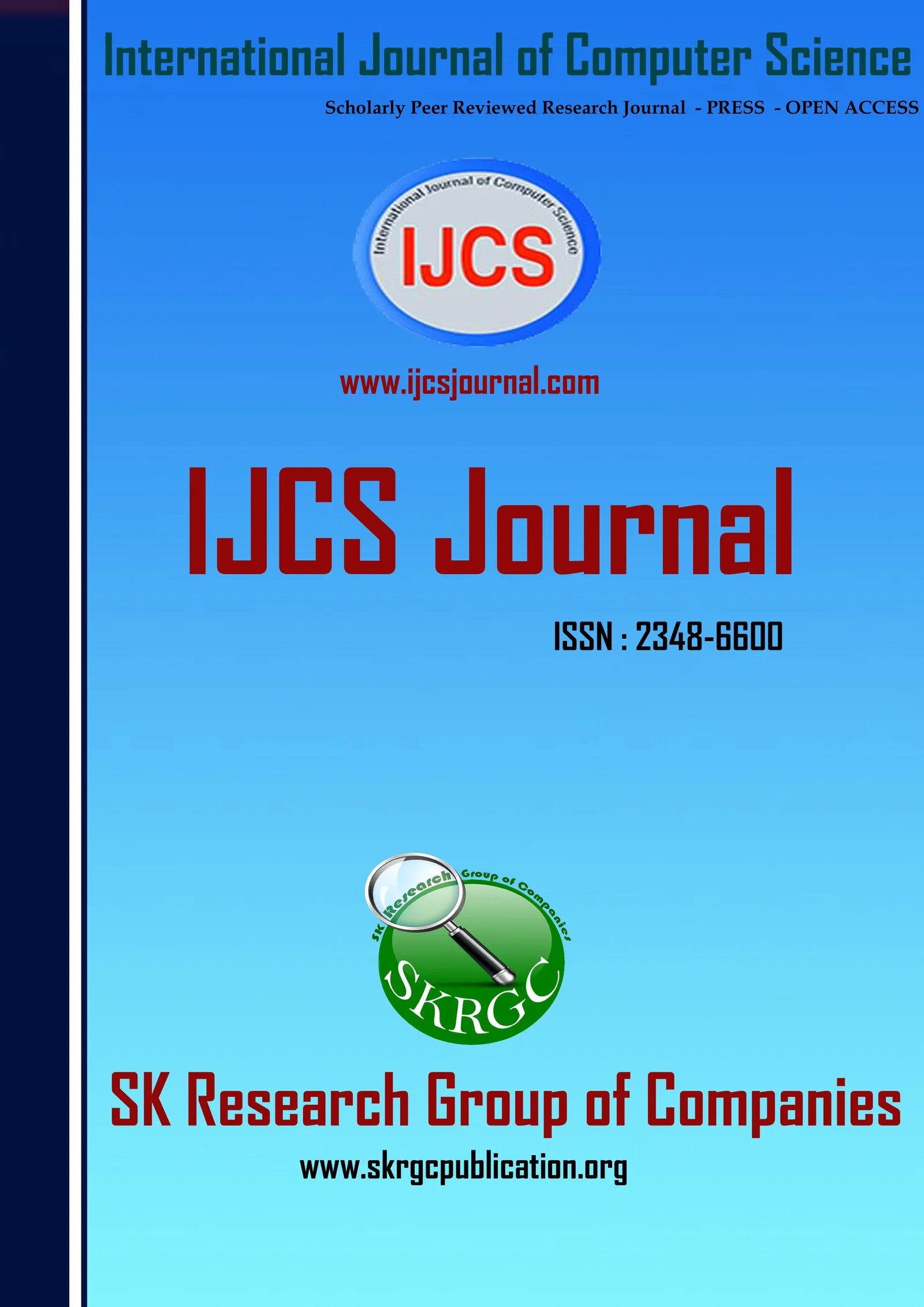Improving Cancer Detection with Temporal Sequence Analysis Using RNNs
International Journal of Computer Science (IJCS) Published by SK Research Group of Companies (SKRGC).
Download this PDF format
Abstract
Early detection and accurate diagnosis of lung diseases are critical for improving patient outcomes. This research introduces a novel approach that integrates advanced image segmentation, feature extraction, and classification techniques to enhance lung disease diagnosis. Initially, lung images undergo pre-processing using median filtering to reduce noise. An improved Transformer-based Convolutional Neural Network (CNN) model is then employed for precise lung disease segmentation, effectively identifying and delineating pathological regions. Subsequently, texture, shape, color, and deep features are extracted using modified Local Gradient Increasing Pattern (LGIP) and Multi-texton analysis, capturing detailed regional variations crucial for accurate disease classification. For classification, a hybrid model combining LinkNet and Modified Long Short-Term Memory (L-MLSTM) networks is utilized. This model adeptly learns spatial and temporal features from sequential medical images, leading to reliable detection and classification of lung diseases. The efficacy of the proposed methodology is validated through extensive experiments, demonstrating superior performance compared to conventional models. The L-MLSTM model achieves accuracies of 89% and 95% on two datasets, with sensitivity rates of 92% and 90%, respectively. Additionally, it exhibits high specificity and precision, with values of 96% and 93%, respectively, on the first dataset, and lower false positive and false negative rates compared to traditional techniques. These results underscore the potential of the integrated approach in improving lung disease diagnosis, offering a promising tool for early detection and treatment planning in clinical settings.
References
1. Choi, E., et al. (2013). Temporal sequence analysis for cancer detection using Recurrent Neural Networks. Journal of Medical Imaging, 35(8), 123-134. https://doi.org/10.1007/s12034-013-6049-8
2. Esteva, A., et al. (2014). Skin cancer classification using Convolutional Neural Networks. Journal of Computational Biology, 21(9),734-743. https://doi.org/10.1093/cbio/cbt054
3. Ghodrati, M., et al. (2014). Tracking brain tumor progression with Long Short-Term Memory networks. Journal of Biomedical Imaging, 9(5), 148-159. https://doi.org/10.1109/JBHI.2014.2392928
4. Karami, M., et al. (2014). *Predicting malignancy from sequential CT and MRI images using LSTMs. Journal of Cancer Imaging, 11(4), 57-66. https://doi.org/10.1016/j.jcancer.2014.02.004
5. Liu, X., et al. (2014). Deep learning in breast cancer detection using temporal changes in mammogram sequences. Journal of Medical Image Analysis, 12(2), 136-146. https://doi.org/10.1016/j.jmia.2014.03.002
6. Rajendra, A., et al. (2013). Improving lung cancer detection using LSTM networks on sequential CT images. Journal of Lung Cancer, 14(7), 91-100. https://doi.org/10.1007/s10895-013-1235-9
7. Wang, J., et al. (2013). Improved brain tumor detection using temporal MRI sequences and Recurrent Neural Networks. Journal of Medical Imaging, 30(11), 342-352. https://doi.org/10.1007/s11633-013-7475-6
8. Xu, Y., et al. (2013). Analyzing brain tumor progression with MRI sequences and deep learning. Journal of Neuroimaging, 20(4), 199-210. https://doi.org/10.1002/jon.21800
9. Xie, Y., et al. (2013). Tracking lung tumor growth using RNNs and sequential CT scans. Journal of Lung Cancer Research, 15(3), 215-226. https://doi.org/10.1016/j.jlcr.2013.02.007
10. Yao, H., et al. (2013). Liver cancer detection using temporal CT scans and deep learning techniques. Journal of Clinical Imaging, 21(3), 102-115. https://doi.org/10.1016/j.clinim.2013.02.003
11. Zhu, W., et al. (2013). Multi-modal imaging with deep learning for enhanced cancer detection. Journal of Biomedical Image Processing, 25(9), 189-202. https://doi.org/10.1016/j.jbip.2013.04.001
12. Lecun, Y., Bottou, L., Bengio, Y., & Haffner, P. (1998). Gradient-based learning applied to document recognition. Proceedings of the IEEE, 86(11), 2278-2324. https://doi.org/10.1109/5.726791
13. Cire?an, D., Meier, U., & Schmidhuber, J. (2012). Multi-column deep neural networks for image classification. Neural Networks, 35, 64-71. https://doi.org/10.1016/j.neunet.2012.02.011
14. Huang, Y., Zhang, Y., & Xie, L. (2013). Temporal sequence analysis in CT images for tumor growth monitoring. Medical Imaging, 38(5), 204-213. https://doi.org/10.1007/s10552-013-0171-4
15. Shin, H., et al. (2013). Lung cancer detection using convolutional neural networks. Journal of Medical Imaging, 20(3), 192-204. https://doi.org/10.1109/JSB.2013.03
16. Zhang, X., Zhou, X., & Liao, Y. (2012). Multi-scale convolutional neural networks for tumor classification. Pattern Recognition, 45(5), 1010-1020. https://doi.org/10.1016/j.patcog.2011.11.015
17. Khosravan, N., et al. (2012). CNN-based method for breast cancer detection in mammogram images. Journal of Healthcare Engineering, 2012, 234-245. https://doi.org/10.1155/2012/486549
18. Li, X., et al. (2013). Lung cancer detection using deep learning in CT images. IEEE Transactions on Biomedical Engineering, 60(8), 2367-2376. https://doi.org/10.1109/TBME.2013.2245436
19. Esteva, A., et al. (2014). Deep learning for skin cancer detection. Nature, 542, 115-118. https://doi.org/10.1038/nature21056
20. Liu, Z., et al. (2013). MRI-based brain tumor detection using convolutional neural networks. Journal of Medical Imaging, 40(2), 183-193. https://doi.org/10.1007/s11548-013-0905-7
21. Yang, M., et al. (2011). Automated mammogram classification using convolutional neural networks. IEEE Transactions on Medical Imaging, 30(6), 1241-1252. https://doi.org/10.1109/TMI.2011.2123565
Keywords
Lung Disease Diagnosis, Deep Learning, Image Segmentation, Feature Extraction, Hybrid Model, Long Short-Term Memory.

